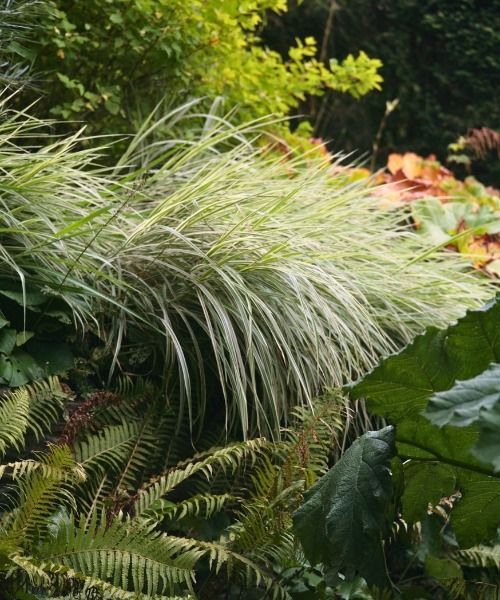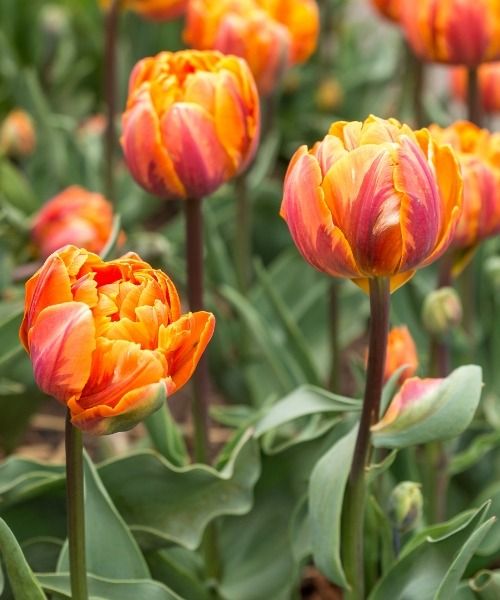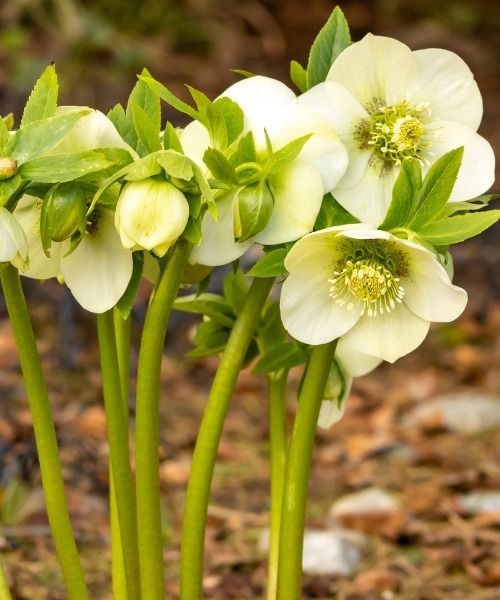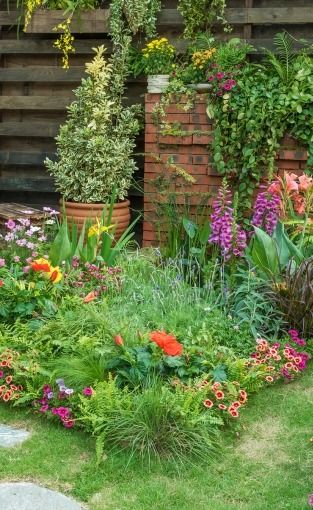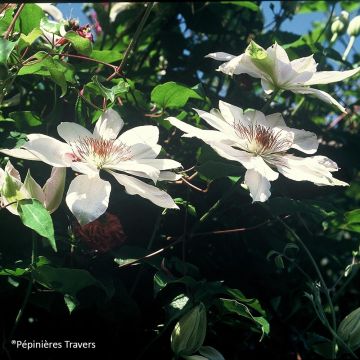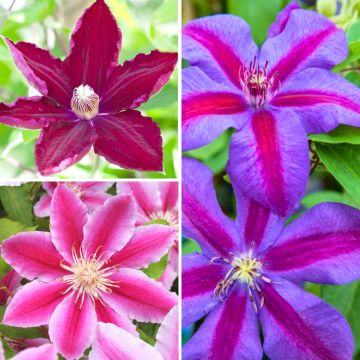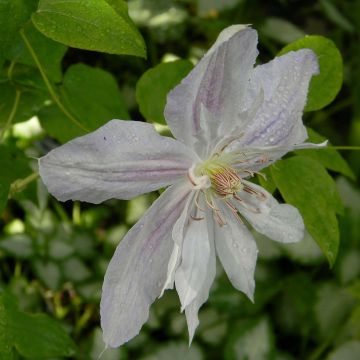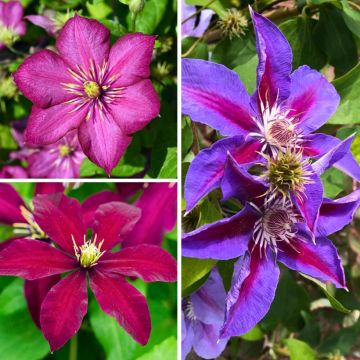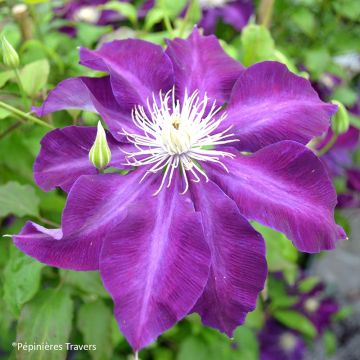Clematis by variety, all our special offers
Would this plant suit my garden? Set up your Plantfit profile →
Available in 1 sizes
Available in 1 sizes
Available in 1 sizes
Available in 1 sizes
Available in 1 sizes
Choose from over 250 varieties of clematis that will thrive in your garden. Climbing, herbaceous, evergreen or deciduous, with large flowers, of the Clematis Patens or Montana, or with long summer flowering like the viticella clematis, or spring and perpetual flowering, clematis comes in many forms and colours. There is something for every taste and every situation. Some form vines that can climb trees and fences up to 8 metres (26 feet), others do not exceed 2 metres (7 feet) and are covered in flowers for many weeks in a pot on the terrace. Others, which form perennial bushes like integrifolia or macropetala clematis, easily fit into beds and borders. Discover this incredible diversity that allows every gardener, even beginners, to welcome this extraordinary plant often called the queen of climbers, in the ground or in pots.






























